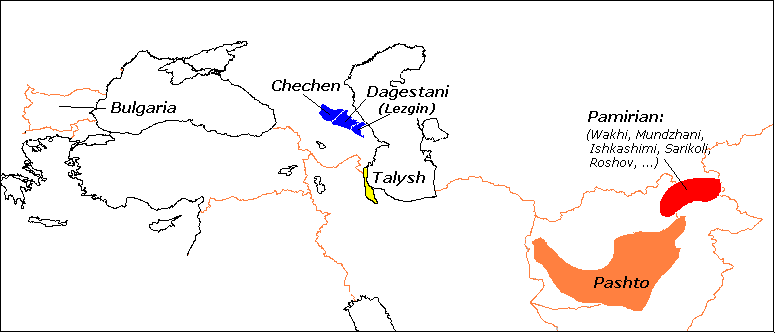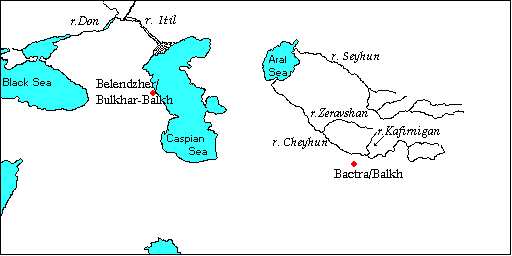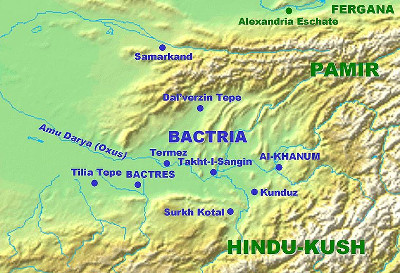Russian version needs a translation
Bulgar Ethnonym
|
Ethnonyms |
||
|
Bulgars, Balkars, Blkars, Malkars, Bolgars, Bulghars, Bulkhars, Bolghars
Bushki, Bulhi, Ba-go, Bao-guo, Pu-ku, Bu-gu, and other variations Subdivisions and ethnic affiliates Ases, Yases, Alans, Barsils, Barsilts, Bersulas, Esegels, Belendzhers, Bandzhars, Balandzhars, Hajlandurs, Hajlandurkh, Khazars, Kupi-Bulgars, Chdar-Bulgars, Kutigurs, Kutrigurs, Oghondor, Olhontor-Blkar, Onogurs, Pugurs, Unoguns, Unogundurs, Venenders, Sabirs, Suvars, and other variations |
||
|
Links |
||
|
Summary |
||
|
There are plenty of derogatory speculations about the etymology of the name "Bulgar", semantically profoundly of the exo-ethnonymic nature, because of their inherent negative connotations not applicable to the endoethnonyms. Not unlike the extraction of "Slav" as an endoethnonym from the English, Italian, German etc. "Slave", these etymologies sound something like this: "Term 'Bolgar' comes from the Türkic 'bulgha' = 'to mix'. These nomadic horsemen groups were mainly composed of As - Ossetians, Eastern Antes - Iranian-Slavic blend, Khazars - a mixed Türkic group, and a people known as Sarmatians, an Iranian group." Another quasi-scientific suggestion deduces "Bulgar" from Türkic yiylga ~ Slavic vlga/vlaga (moisture) > Volga > Volgar = Bulgar, and correspondingly deduces Bulgars from later Itil Bulgaria location on the Itil/Volga river. This etymology conflicts with chronology, which documented Bulgars centuries before the Slavs reached the fringes of the Volga river, and phonetically, forming an ethnonym with a combination of ostensibly Slavic root and a Türkic ethnonym-forming word.
The form Bulgar predominates in the sources and in many languages, Synopsis of ideas and
speculations on the etymology of the name Bulgar: In modern Chinese the Bulgars are known as 'Ba-go' or 'Bao- guo', and B. Simeonov concludes that the in Chinese the ancient word 'Bulgar' should sound as 'Pu-ku' or 'Bu-gu'. A tribe or a tribal group with Bugu name is repeatedly mentioned in different Chinese sources from the 103 BC to the 8-th century AD. They speak about people or tribe Pu-ku/Bu-gu inhabiting western and eastern parts of the Middle Asia, the lands north and north-west of Tien-Shan, Jety-Su (in Russ. Semirechye) and west of the rivers Seyhun (also Jaxartes, Yaxartes, Syrdarya) and Cheyhun (also Oxus, Amudarya). The Chinese annals indicate that the structure of the Bulkhar (as in Balkh) administrative hierarchy moved from the Middle Asian area to the Northern Caucasus area. The title Sulifa for the tribal head of the Middle Asian Puku - Bugu people, recorded in the Chinese annals as Sulifa Kenan Bain (Sulifa Khan Bayan?), later in the 10-th century Al-Masoudi recorded the title Sulifa (Sulifan) used among the Dagestani Bulgars by a Khazarian vassal, a head of the Djidjan Kingdom (Kingdom of the Huns) main city Semender. For a time, the title Sulifa was exploited to prove a non-Türkic genesis of the Bulgars, to supply Bulgars with an alternate, shiny and more respectable in the eyes of enthusiastic historians pedigree. As usual , the problem proved to be non-existent, instead of an Iranian etymology, the title "Sylifa" turned out to be a Chinese denomination of the Türkic "Elteber", a viceroy. The Chinese used the word "Sylifa" to describe an appointed position that reports to the leaders of the Kaganate, Kagan or Yabgu, and supervises the work of the Tutuks, regional tax collectors. An Elteber was in charge of a tribe or a group of tribes (Suishu, Ch. 89; Tangshu Ch. 140b). Not only Puku - Bugu people, but a number of other Türkic tribes had their Sylifas in the areas of the Middle Asia and Central Asia occupied by the Chinese. A corroborating evidence comes from comparison of burial traditions. In several necropolises in the Bishkek valley in Southern Tajikistan, in the basin of the river Kafir-nigan, a right tributary of Cheyhun, most of the graves show striking similarities with necropolises from the Lower Itil. The necropolises in Middle Asia (Northern Bactria) have much in common with the succeeding Lower Itil and Danube Bulgaria necropolises . The necropolises in Northern Bactria are well dated, in the Bishkek valley they existed from the end of the 2 c. BC till the beginning of the 1 c. AD, the Babashnov necropolis existed from the 1 c. BC till the 3 c. AD. The necropolises are attributed to the northern or north-eastern Middle Asian nomads, who at the end of the 2 c. BC attacked and ended the existence of the Greko-Bactrian kingdom. The events of that time span in the Bactria area can explain the pressure for the Türkic nomadic Bulkhar pastoralists to move. After the fall of the Greko-Bactrian kingdom, in the following period from the 2 c. BC to the 3 c. AD, Bactria experienced multiple wars and harassments connected with the Saka's onslaughts culminating in ca. 75 BC, the establishment of the Scythian Kushanid Empire ca. 10 AD, rout of the Eastern Hun Empire in ca. 118 AD, coming under the Persian Kushanshah rule in ca. 350 AD and the onslaught of the Ak Huns (White Huns, Hephthalites) in ca. 410 AD. Chronologically, the documented appearance of the Türkic nomadic relatives, the Khazars and Bulgars, in the Northern Pontic, Northern Caspian and Northern Caucasus area agrees with the archeological evidence.
The Bactrian nomadic Türkic necropolises ceased to function during the 2-3 c. AD, exactly during the time when in the Lower Itil took place profound transformations of the material culture and burial rites of the "Late Sarmatians". During a general unrest among the nomadic peoples, which followed the Chinese destruction of the Eastern Hun Empire, the population maintaining these necropolises moved westwards and settled in the lands north of the Caspian Sea. In the following centuries the Bulgars were part of the Hunnish confederation, until the death of Attila and the following revolt of the Germanic tribes brought the Bulgars into the head of the confederation. 
Bulgar ethnonymic nomenclature: Kutigurs, Kutrigurs, Kotrags, Kuturgurs etc. = köturi + ogor , i.e "Western Union", from Türkic köturi (behind) = "to the west", and ogor (in Ogur languages) = oguz (in Oguz languages) = union of tribes. Accordingly, Kutigurs, Kutrigurs, Kotrags, Kuturgurs etc. are known to coach in the western area of the Hunnish Empire and its descendents. Utragurs, Utrigurs, Otragurs etc. = utra + ogor , i.e "Eastern Union", from Türkic utra (front, opposite) = "the opposite side, i.e. the east", and ogor = oguz = union of tribes. Accordingly, Utragurs, Otragurs, etc. are known to coach in the estern area of the Hunnish Empire and its descendents. When the rebellious Shambat ruled in the "Samo State" in the west of the "Great Bulgaria", Khan Kurbat sent Asparukh in the opposite direction, to the east, to lead the Utigurs/Utiguri/Utrigurs and prevent him from supporting the rebellion. After defeat by Khazars, Asparukh took his subject "Eastern Ulus" Utrigurs west of "Western Ulus" Kutrigurs. Onogurs, Unoguns etc. = on + ogor , i.e "10 Tribes Union", from Türkic on = "10", and ogor = oguz = union of tribes. This is an ethno-political name, because the ten constituent tribes were very specific tribal communities. |
||
|
References |
||
|
A.M. Mandelshtam, Pamjatniki
kushanskogo vremeni v Severnoj Baktrii, p.130. |

